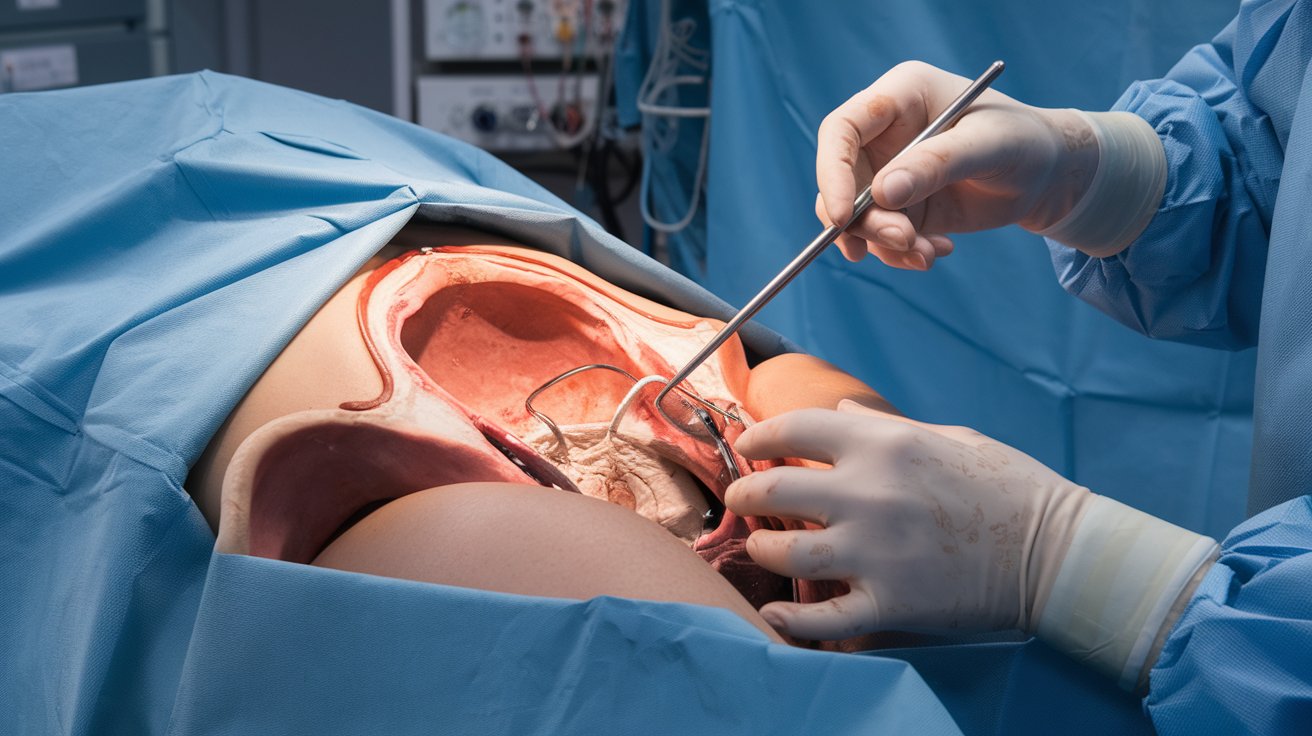
Symphysiotomy is a surgical procedure that involves cutting the cartilage of the pubic symphysis to widen the pelvis, aiding childbirth when labor is obstructed. This practice dates back to 1597, with a history marked by both medical necessity and controversy. While it can be life-saving in resource-poor settings, its use in Ireland from 1944 to 1987 without patient consent has sparked ethical debates. The procedure carries risks like infection, fistulas, and long-term pain, yet offers advantages such as avoiding uterine scarring. Understanding symphysiotomy's history, indications, and complications is crucial for appreciating its role in modern obstetrics.
Key Takeaways:
- Symphysiotomy is a historical surgical method to widen the pelvis for childbirth. It's rare today but crucial in resource-poor settings, helping when Cesarean sections are not feasible.
- The controversial use of symphysiotomy in Ireland highlights the importance of ethical medical practices and patient consent. Modern guidelines ensure it's performed safely and only when necessary.
What is Symphysiotomy?
Symphysiotomy is a surgical procedure with a long and complex history. It involves dividing the cartilage of the pubic symphysis to widen the pelvis, aiding childbirth when there are complications.
-
Definition and Purpose: Symphysiotomy is a surgical method to widen the pelvis by cutting the cartilage of the pubic symphysis, helping in cases of obstructed labor.
-
Historical Background: The first recorded symphysiotomy was described in 1597 by Severin Pineau, who noticed a diastasis of the pubis in a hanged pregnant woman.
-
Evolution of the Procedure: Initially, it involved manually cutting through the pubic symphysis. In the 18th century, John Aitken invented a chainsaw-like device to assist in the procedure.
When is Symphysiotomy Used?
Symphysiotomy is not a common procedure today, but it has specific indications and uses, especially in certain challenging childbirth scenarios.
-
Indications: It is indicated in cases of obstructed labor, particularly when the cervix is fully dilated and the baby's head is at most 2 cm above the ischial spines or no more than 3/5 above the pelvic inlet.
-
Controversial Practices in Ireland: Between 1944 and 1987, symphysiotomies were performed in Ireland without patient consent, often under religious motivations, leading to the formation of the Survivors of Symphysiotomy (SoS) advocacy group in 2002.
Risks and Complications
Like any surgical procedure, symphysiotomy carries risks and potential complications that must be carefully considered.
-
Complications: Risks include urethral and bladder injury, fistulas, infection, pain, and long-term walking difficulty, emphasizing the need for strict medical guidelines.
-
Procedure Details: The procedure involves surgically dividing the ligaments of the symphysis pubis under local anesthesia, often combined with vacuum extraction for safer delivery.
-
Temporary Pelvic Enlargement: Symphysiotomy results in a temporary increase in pelvic diameter, typically up to 2 centimeters, aiding vaginal delivery.
Symphysiotomy vs. Cesarean Section
Comparing symphysiotomy with Cesarean sections helps understand why one might be chosen over the other in certain situations.
-
Comparison with Cesarean Section: While Cesarean sections are preferred for difficult births, symphysiotomy remains a life-saving procedure where Cesarean sections are not feasible or available.
-
No Uterine Scarring: One advantage of symphysiotomy is the absence of uterine scarring, eliminating the risk of future uterine rupture associated with Cesarean sections.
-
Risk of Fistula: Symphysiotomy has a higher risk of fistula formation compared to Cesarean sections, a significant concern in postoperative care.
-
Infection Risk: Despite the higher fistula risk, symphysiotomy has a lower infection risk compared to Cesarean sections, especially in resource-poor settings.
Modern Guidelines and Practices
Current guidelines and practices ensure symphysiotomy is performed safely and only when necessary.
-
Current Practice Guidelines: Symphysiotomy is recommended for trapped head during vaginal delivery of a breech birth, particularly in rural and resource-poor settings of developing countries.
-
Maternal and Perinatal Mortality: A 2016 meta-analysis found no significant difference in maternal and perinatal mortality between symphysiotomy and Cesarean sections in low and middle-income countries.
Historical Context in Ireland
The use of symphysiotomy in Ireland has a controversial history, with many women suffering long-term consequences.
-
Historical Use in Ireland: Symphysiotomies were popular in Ireland well into the 20th century, partly due to religious beliefs and fear of future uterine rupture from multiple Cesarean sections.
-
Patient Experiences: Women who underwent symphysiotomy in Ireland often described it as terrifying, agonizing, and debilitating, with chronic health issues like incontinence, pain, and early arthritis.
-
Compensation for Victims: In 2016, hundreds of Irish women who underwent symphysiotomy were awarded compensation by the government, acknowledging the historical injustices they faced.
-
Advocacy and Awareness: The Survivors of Symphysiotomy (SoS) advocacy group has raised awareness about the procedure and its implications, leading to significant changes in medical practices and patient rights.
Ethical Considerations
The ethical implications of symphysiotomy, especially when performed without consent, are profound.
- Medical Ethics: The forced symphysiotomies in Ireland between 1944 and 1987 raise serious ethical concerns, highlighting the importance of informed consent and ethical medical practices.
Global Perspective
Symphysiotomy's role varies globally, being rare in developed countries but crucial in resource-poor settings.
-
Global Perspective: Symphysiotomy is rarely performed in developed countries due to safer alternatives like Cesarean sections but remains vital in resource-poor settings.
-
Technique Evolution: The technique has evolved, with improved operative methods like partial symphysiotomy and better postoperative care reducing complications.
-
Local Anesthesia: Typically performed under local anesthesia to minimize pain and ensure patient comfort, using lignocaine (0.5% solution) for infiltration.
-
Guidelines for Performance: To ensure safety, symphysiotomy should be performed only when no safe alternative exists and should not be repeated due to risks of gait problems and continual pain.
-
Physical Therapy: Patients with long-term walking difficulties and pain post-symphysiotomy can benefit from physical therapy to improve their condition and reduce discomfort.
-
Abduction of Thighs: Abducting the thighs more than 45 degrees from the midline can cause tearing of the urethra and bladder, highlighting the importance of careful positioning during the procedure.
Classification and Terminology
Understanding the classification and terminology of symphysiotomy helps in its proper documentation and study.
-
ICD-9-CM Code: Symphysiotomy is classified under ICD-9-CM code 73.94, indicating its specific classification in medical records.
-
Pelviotomy and Synchondrotomy: Also known as pelviotomy and synchondrotomy, reflecting its role in widening the pelvis through cartilage division.
Specific Indications
Symphysiotomy is used in specific childbirth complications where other methods may not be feasible.
-
Obstructed Labor: The most common indication is obstructed labor, particularly when the cervix is fully dilated and the baby's head is at risk of being trapped.
-
Shoulder Dystocia: Sometimes performed in cases of shoulder dystocia that do not resolve with routine maneuvers, though this use is controversial due to the risks involved.
-
Trapped Head During Breech Birth: Recommended for trapped head during vaginal delivery of a breech birth, especially in rural areas and resource-poor settings where Cesarean sections may not be feasible.
Importance in Resource-Poor Settings
In low-income countries, symphysiotomy remains a crucial procedure due to limited access to advanced medical facilities.
-
Resource-Poor Settings: In low-income countries, symphysiotomy is crucial due to the lack of access to advanced medical facilities and skilled obstetricians, often performed with vacuum extraction to aid delivery.
-
Life-Saving Procedure: Symphysiotomy can be life-saving for both mother and baby when Cesarean sections are not available or safe, not requiring an operating theater or advanced surgical skills.
Advances and Postoperative Care
Advancements in techniques and postoperative care have improved the outcomes of symphysiotomy.
-
Improved Operative Techniques: Advancements in operative techniques, like partial symphysiotomy and early mobilization postoperatively, have significantly reduced complications.
-
Postoperative Care: Proper postoperative care, including early mobilization and physical therapy, is essential to minimize complications and help patients recover more effectively.
-
Contemporary Practices: While no longer common in developed countries, symphysiotomy continues in resource-poor settings, included in obstetric emergency training courses, emphasizing its importance in global healthcare practices.
The Lasting Impact of Symphysiotomy
Symphysiotomy, a procedure with a long and controversial history, has played a crucial role in childbirth, especially in resource-poor settings. While it offers a life-saving alternative when Cesarean sections aren't feasible, the procedure comes with significant risks and ethical concerns. The forced symphysiotomies in Ireland between 1944 and 1987 highlight the importance of informed consent and patient rights in medical practices.
Despite advancements in medical technology, symphysiotomy remains relevant in certain parts of the world. Improved techniques and better postoperative care have reduced complications, but the procedure's legacy continues to spark debate. Advocacy groups like Survivors of Symphysiotomy have brought much-needed attention to the issue, leading to compensation and changes in medical guidelines.
Understanding symphysiotomy's history and implications helps ensure safer, more ethical childbirth practices globally.
Frequently Asked Questions
Was this page helpful?
Our commitment to delivering trustworthy and engaging content is at the heart of what we do. Each fact on our site is contributed by real users like you, bringing a wealth of diverse insights and information. To ensure the highest standards of accuracy and reliability, our dedicated editors meticulously review each submission. This process guarantees that the facts we share are not only fascinating but also credible. Trust in our commitment to quality and authenticity as you explore and learn with us.


